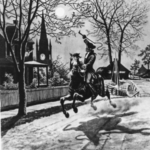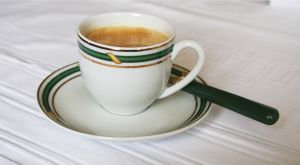Dorchester, Boston, Massachusetts was founded in 1630 by newly arrived settlers from England. Boston itself was not founded until a year later. As with many of the settlements of that time, the main industry in Dorchester, Boston Massachusetts was agriculture.
They knew how to build in those days. They built homes to last forever. The oldest home in the City of Boston, the James Blake House, built in 1648, is still standing today and is located in Richardson Square, a few blocks from the Dorchester Historical Society.
Because of its close proximity to Boston, Dorchester played and important part in history by helping to defend Boston during the Revolution. Cannon were places on the hills overlooking Dorchester, giving the rebels an advantage over any invading British troops. In fact, it was the actions of the citizens in towns like Dorchester that forced the British to evacuate Boston. Other communities, such as Roxbury did the same and if it were not for these settlers, history could very well have had a different outcome.
Dorchester holds the title to many firsts in American history that have impacted the country right up to the present day.
America’s first chocolate factory opened in Dorchester, in 1765, and the Walter Baker Chocolate Factory operated there until 1965. If you have ever baked a chocolate cake, you probably used their product.
Dorchester was first to use public tax money for the support of its schools, which is guaranteed buy the Constitution, written almost 200 years later. Dorchester was the first in organizing the New England town government, choosing twelve men in 1633 as selectmen or townsmen. The first grist mill was started on the Dorchester bank of the Neponset River in 1634. . A grist mill was important to have in the area at that time. Dorchester was conveniently located to other towns, making the grist mill convenient to all. Dorchester once contained the only powder-mill, the only paper-mill, the only cracker manufactory, the only chocolate-mill and the only playing-card manufactory in the whole country. The people of Dorchester did not let the grass grow under their feet. They were the ones who took the risks and the lead in introducing all kinds of industries.
While farming was the main occupation in the area in the early days, it was not the only one. With its strategic location on the Charles River it was only logical that the residents would turn to occupations such as shipbuilding and they did so very early in the history of Dorchester, about
1640. The Putnam Nail Company began the manufacture of horseshoe nails in the 1860s, and in the 1890s the company employed 400 to 500 workers, producing nearly ten tons of nails each day.
Needless to say, Dorchester was not a small community. It could not accomplish all it did if it were. As a matter of fact, Dorchester is the largest neighborhood in Boston, Massachusetts. Dorchester contained South Boston, Hyde Park, Milton, Wrentham, Stoughton, Dedham, Sharon, Foxboro, and Canton. It was so large that Boston annexed Dorchester piece by piece and the entire process took 66 years, from 1804 until 1870.
By the end of the 19th century the upper class of Victorian Society had discovered what a wonderful place Dorchester was to live.
Today houses in Dorchester can range from about $180,000 way on up to $500,000.






